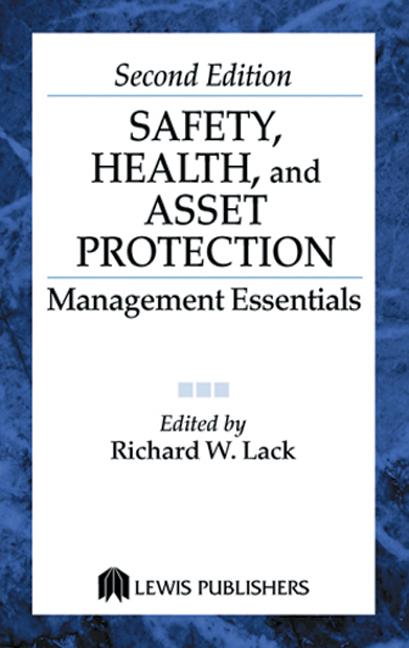The trucking industry lobbies for relaxing safety rules, NIOSH launches an initiative to study the aging of the nation’s workforce and secret agents have really dangerous jobs. These were among the top occupational safety and health articles posted on ISHN.com this week.
Study: Hearing aids may help protect brain health
For several years, studies have linked hearing loss and dementia, but no major study has addressed the big question: Could using hearing aids reduce the risk of cognitive decline?
U.S. smoking rates high among uninsured adults
American adults who are uninsured or on Medicaid smoke at rates more than double those for adults with private health insurance or Medicare, according to a study published by the Centers for Disease Control and Prevention in today’s Morbidity and Mortality Weekly Report (MMWR).
OSHA determines Piramal Glass USA did not provide FR clothing
A 34-year-old machine operator suffered third-degree burns on his legs and hands when molten glass bottles fell on the production floor and ignited oil residue that had leaked from the machines. The man had not been provided fire-retardant protective clothing, and the fire spread to his pant leg. He has been unable to return to work since the injury.
As we move further into the 21st century, converging demographic, economic, and cultural trends have made population aging one of the most important issues facing U.S. workers and businesses. In this context, however, far less attention has been paid to the safety and health needs of older workers.
The International Network of Safety and Health Practitioner Organisations (INSHPO) today launched the Global Capability Framework for Occupational Health and Safety Professionals at the FLUORO Conference in Perth.
Global report
With one of the fast-growing economies among developed nations – and one largely driven by industry and construction – South Korea faces occupational safety and health challenges similar to those in other countries.
A NIOSH Science Blog post
Your heart may race while your eyes follow the iconic figure that is James Bond as he holds it together to do his job: driving at high speed down alleyways, under railway crossings, and often through explosive fire and other obstructions. You may wonder how he will survive driving a car that has just been catapulted up a runway and over a body of water. This British secret agent stops at nothing.
There are resources available to help
Although the compliance deadline for OSHA’s confined spaces in construction rule has been pushed back a second time – to January 8, 2016 – the new year and the new requirements will be upon us in no time.
Study shows benefits of “affective organizational commitment”
Workers who feel emotionally attached to and identify with their work have better psychological well-being, reports a study in the November Journal of Occupational and Environmental Medicine, official publication of the American College of Occupational and Environmental Medicine (ACOEM).
A National Transportation Safety Board (NTSB) team has been dispatched to Akron, Ohio to investigate yesterday’s accident involving a small plane that crashed into an apartment building, killing all nine people on board.
Worker suffers 3rd-degree burns in glass factory fire
NIOSH turns its attention toward the aging workforce
Global OHS Professional Capability Framework to give clarity to OHS role
Korea strives to focus its safety culture on prevention
James Bond exposed…to 50 years of occupational hazards
Ready to comply with new confined spaces in construction standard?
Feeling emotionally attached to work leads to improved well-being
NTSB sends team to investigate Akron, Ohio plane crash
EPA, American Lung Association take aim at radon to reduce lung cancer deaths
The EPA, American Lung Association, and other partners have announced a strategy for preventing 3,200 lung cancer deaths annually by 2020 through radon exposure reduction strategies.
OSHA fines TimkenSteel nearly $400K for safety hazards at Canton, Ohio, plants
A crane's safety latch failed and 1,000 pounds of equipment fell on a man below and injured him as he worked on the factory floor of TimkenSteel Corp. For the second time in a year, OSHA found struck-by, fall and amputation* hazards at the company's two Canton plants following inspections.
OSHA has issued a final rule establishing procedures and time frames for handling employee retaliation complaints under the National Transit Systems Security Act and the Federal Railroad Safety Act. The final rule was effective yesterday, Nov. 9, 2015.
The fuel supply line of a plane that caught fire on a Ft. Lauderdale runway Oct. 29th, terrifying its passengers, had disconnected, says the National Transportation Safety Board, which is investigating the incident.
The Occupational Safety and Health Administration (OSHA) and the American Red Cross have renewed their alliance to continue efforts to reduce workplace incidents and protect workers from hazardous exposures.
Big trucks, big bucks
A FairWarning Story
Big rig crashes kill nearly 4,000 Americans each year and injure more than 85,000. Since 2009, fatalities involving large trucks have increased 17 percent. Injuries have gone up 28 percent. Given these numbers, you might expect Congress to be agitating for tighter controls on big rigs.
In response to a recommendation from the National Transportation Safety Board, the American Petroleum Institute (API) has developed American National Standards Institute/API Recommended Practice 1173, Pipeline Safety Management Systems for the pipeline industry. The API action exceeded the Safety Board’s recommendation to facilitate the development of a safety management system standard specific to the pipeline industry.
Last week, the American Industrial Hygiene Association® (AIHA) announced its new Industrial Hygiene (IH) Professional Pathways Program during AIHA Fall Conference 2015 in Orlando, Fla.
Unique case raises questions about misdiagnosis and treatment
Scientists at the Centers for Disease Control and Prevention have discovered cancer cells originating in a common tapeworm may take root in people with weakened immune systems, causing cancer-like tumors. It is the first known case of a person becoming ill from cancer cells that arose in a parasite – in this case, Hymenolepis nana, the dwarf tapeworm.
The Federal Aviation Administration (FAA) has entered into a Pathfinder agreement with CACI International Inc. to evaluate how the company’s technology can help detect Unmanned Aircraft Systems (UAS) in the vicinity of airports.
Worker injured when 1K-pound load falls from crane
New rules in place for railroad, transport retaliation
Screams and smoke: NTSB looks into cause of airplane fire
OSHA and the American Red Cross renew alliance focused on protecting the safety and health of volunteers, employees
Heavy-spending trucking industry pushes Congress to relax safety rules
Oil industry group’s new pipeline safety guidelines exceed NTSB’s recommendations
AIHA announces new IH Professional Pathways Program
CDC researchers link cancer cells from parasite to human tumors
FAA expands effort to detect unmanned aircraft near airports


